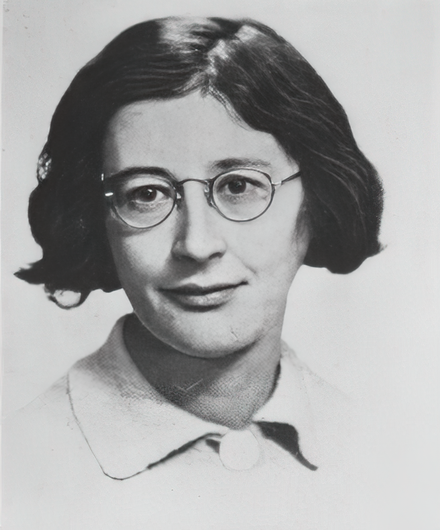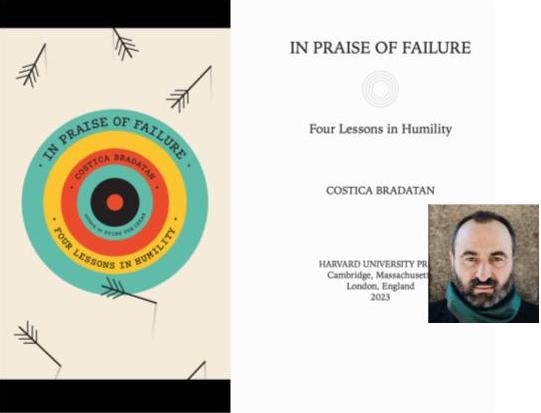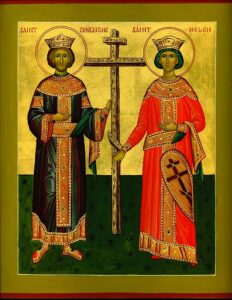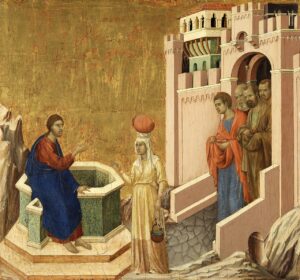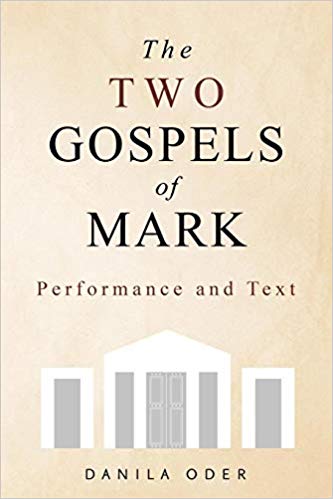Some critics have portrayed me as being like a moth fluttering to the nearest flame, as one who is always attracted to the latest most radical viewpoint, and therefore my views cannot be taken seriously. What those critics generally fail to recognize, however, is the consistency of my readings of the sources and the fact that my approach is for most part taken for granted among scholars who specialize in other fields of historical research.
Let me explain.
The historians of ancient Rome have their text sources: Tacitus, Suetonius, etc. Those historians have been trained to read those texts in a critical manner: What is the bias of the author? How could the author have known the details we are reading? etc.
At first glance, it appears that critics of the Gospels follow the same approach, and at a certain superficial level they do: What is the theological bias of the author of this gospel? What are the implied or likely sources for this or that episode or saying?
But there is a fundamental difference too often overlooked in the literature of New Testament scholarship that changes everything.
Before I explain that fundamental difference, let me narrate how I came to discern the great chasm between historical inquiry into “secular” ancient history and “biblical” history.
It was some years ago when I suppose I was still feeling somewhat raw from having discovered how wrong “about everything” I had once been in a religion that I had left behind. I had learned many lessons from my experience of having been so wrong — think of “In Praise of Failure” of my previous two posts — and had become hyper-sensitive about repeating mistakes and falling into a new set of misdirections. So when I encountered Earl Doherty’s case for Jesus being non-historical my instinctive reaction was extreme caution and scepticism. Was this just another idea that had no basis, was entirely ad hoc, a fancy for hobbyists?
I dedicated a lot of time to trying to work through exactly how we know anything at all “for a fact” about the ancient past. I read widely but found that most historians seemed to take for granted certain data that they read in their sources. They had their reasons for rejecting this or that detail, but I rarely found a clear explanation of how they came to conclude that, for instance, Julius Caesar really was assassinated, or that there really was a Great Fire in Rome in the time of Nero. That Julius Caesar and Nero really existed was evident enough from material evidence – coins and monuments. But what about Socrates? The historians seemed to have an abundance of data but I searched without much success to find a clear explanation for why they seemed to take certain information for granted (e.g. the existence of Socrates).
It took some time but I eventually came to identify the foundations of their knowledge.
The existence for Socrates, for whom we have no surviving physical monuments, was accepted for essentially the same reason they accepted the historicity of Julius Caesar: the evidence of one source was corroborated independently by another contemporary source. Even literary sources could corroborate one another. Historians focussed on areas for which they had sources whose provenance they could reasonably understand and trust, and that were demonstrated to be of the kind that had good grounds for conveying largely reliable information. Such sources are on the whole independently corroborated. Such understanding is the bread and butter of historians and many do seem to take it for granted so that it “goes without saying”.
But not every detail in those sources is taken for granted as historical, of course. Take the case of the plague of Athens during the Peloponnesian War. That there was a plague would seem to be corroborated by the fact that our main source for it — Thucydides — we know from other information was evidently an eyewitness and in a position to know and record the fact. It does not follow that every detail Thucydides wrote was historical, however. We also have fictional dramatic works describing plagues and since we see these closely mirrored in Thucydides’ description of the Athenian plague, it is reasonable to conclude that Thucydides drew upon those fictional sources to dramatize his otherwise historical narrative.
Can a historian sift historical information from the Gospels in the same way he or she does from Thucydides? The answer is a resounding No. That is because we have no contemporary or reliable information about the identity of their authors. We don’t even have any independent evidence to help us decide when they were written — except that they had to be some time before the middle or late second century because that’s when we find them discussed by Church Fathers. Moreover, and here is a point I find commonly misunderstood, they do not even evince core characteristics of other historical writings of the time: they do not even seek to give readers explicit or implicit reasonable grounds for trusting them. Yes, the Gospels of Luke and John do point to “eyewitnesses” but they do so in such vague and cryptic terms that doubts inevitably arise among readers who are familiar with similar yet more detailed and testable claims by other historians. The authors hide their identities, or leave readers guessing about their ability to trust them. The Gospel of Matthew plays with the word “mathete” in a way that leads readers of the Greek text to suspect the author is indeed a certain Matthew, but who that Matthew was we have no idea; Luke in his second volume (Acts) slips into “we” as if he himself is an eyewitness reporter, but again it is all very vague and cryptic. We don’t know who this supposed eyewitness is. And the final word must be that the Gospels are clearly theological narratives advocating belief in a miracle story. Anyone familiar with the historical writings of the era cannot fail to notice the stark differences.
I have spoken of independent corroboration. Independent corroboration has to come from contemporaries or from persons who have access to information contemporary with the composition of the texts being studied. A document that appears decades after the source text can do no more than tell us what someone believed (or wanted others to believe) in their own time. One of the reasons historians reject the claim that Martin Luther committed suicide lies in the fact that it first appeared only “twenty years” after his death.
We have no independent evidence to pin down a date for the creation of the Gospels. We may surmise from internal evidence (e.g. the prediction of the destruction of the Temple) that a work was composed around the time of its destruction but that is essentially nothing more than speculation.
Our extant evidence compels us to keep the following factors in mind when reading the Gospels as historical sources:
- We do not know who wrote them or the circumstances in which they were written;
- We do not know when they were written (short of somewhere between the early first century and the mid to late second century);
- We do not know what sources were used for their narratives and sayings (short of some episodes and speeches being clear adaptations of Old Testament writings).
New Testament scholars long relied upon what they called “criteria of authenticity” to try to establish strong probabilities for the historical veracity of certain details but that method is alien to the methods used by other historians. Example:
- If an episode points to a negative act by a Church hero such as Peter’s denial of Jesus, it is likely to be true – “the criterion of embarrassment”.
Such methods have long been dismissed as logically fallacious by other historians and are finally being acknowledged as flawed by New Testament scholars. In the case of the above example, it is reasonable to imagine the embarrassing story is created to encourage other followers that know that God can forgive and rehabilitate those who are weak and fall.
Some New Testament scholars have turned away from the criteria of embarrassment and have turned to “memory theory” instead. But again, we are in the realm of circularity: we begin with the assumption that there is a historical event that has spawned the Gospel narrative, but we believe that there is a historical event at the start because we we can see “how it has been modified” by various interests before reaching the Gospel author.
We can hypothesize how Gospel stories originated, that they came to the authors by means of oral traditions, but hypotheses can never be more than hypotheses unless we can find indisputable evidence that lifts them beyond that status.
My approach to reading the Gospels is through the acknowledgement of these realities. This perspective is grounded in the all but taken for granted approach of historians who undertake research into other times and places. As long as certain questions about the source documents remain open those documents cannot be read or used in the same way as sources for which those questions are definitively answered.
This is not hyper-scepticism or straining to be some sort of contrarian. It is acknowledgment of the realities about our sources.

